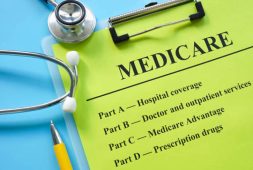Overweight Or Obese Individuals Who Took A Weight Loss Drug Saw A Decrease In Their Blood Pressure

The battle against high blood pressure often targets its root cause: obesity. Rather than merely addressing the symptoms, recent research highlights a promising approach through weight reduction medications like Zepbound (tirzepatide). A study published in the journal Hypertension demonstrates significant improvements in systolic blood pressure—a key indicator—among nearly 500 obese adults who took Zepbound over an eight-month period.
Lead researcher James A. de Lemos, MD, chair of cardiology at UT Southwestern Medical Center, notes the impressive impact of tirzepatide on blood pressure reduction, both throughout the day and night. Despite being primarily studied as a weight loss medication, its efficacy in lowering blood pressure rivals that of dedicated hypertension treatments.
Sold under the name Mounjaro for managing type 2 diabetes, tirzepatide’s effectiveness in reducing blood pressure carries substantial implications for combating obesity, according to Michael E. Hall, MD, a cardiologist and chair of the school of medicine at the University of Mississippi Medical Center. This promising link between Zepbound and blood pressure control offers hope for individuals struggling with both obesity and hypertension, potentially allowing some to reduce or even discontinue their hypertension medication.
“Hypertension is the most attributable risk factor for cardiovascular diseases, thus, effective treatments for common causes of hypertension such as obesity are needed. Effectively, this is treating the root cause of hypertension — obesity — rather than treating the secondary high blood pressure,” Dr. Hall said. He was not part of the study conducted.
All About Hypertension
Hypertension, often referred to as high blood pressure, is a medical condition characterized by elevated pressure within the arteries, requiring the heart to exert more force than usual to pump blood throughout the body. If left unmanaged, hypertension significantly heightens the risk of severe health complications, including heart attacks, strokes, and various other cardiovascular issues, as outlined by the American Heart Association (AHA).
Within blood pressure measurements, the systolic pressure, denoted as the top number, signifies the force exerted on blood vessels during the heart’s contraction phase. Interestingly, research suggests that elevated systolic blood pressure serves as a more potent indicator of cardiovascular mortality compared to diastolic pressure, which represents the pressure in the arteries when the heart is at rest.
According to guidelines provided by the Centers for Disease Control and Prevention (CDC), a healthy blood pressure reading typically falls below 120/80 millimeters of mercury (mmHg). However, the definition of high blood pressure may vary slightly depending on healthcare providers, with thresholds typically set at 130/80 mmHg or 140/90 mmHg for diagnosis.
Statistics from the American Heart Association’s 2024 Heart Disease and Stroke report highlight the pervasive nature of hypertension in the United States, with over 122 million adults affected, representing nearly half of the adult population. Moreover, approximately 42 percent of adults in the country are classified as obese, further exacerbating the prevalence of cardiovascular issues. These figures underscore the pressing need for widespread awareness, prevention, and management strategies to mitigate the detrimental impact of hypertension on public health.
Systolic Blood Pressure Decreased from 7.4 to 10.6 mmHg on Zepbound
Previous research demonstrated the efficacy of Zepbound in reducing blood pressure readings within clinical settings. However, in this proposed substudy, investigators aimed to delve deeper into the drug’s impact on blood pressure across a 24-hour period.
The original study observed individuals classified as overweight or obese, with a body mass index (BMI) of 27 or higher, who received weekly tirzepatide injections at doses of 5 mg, 10 mg, or 15 mg over 72 weeks. Remarkably, participants experienced average weight reductions of 15 percent, 19.5 percent, and 20.9 percent, respectively, in comparison to those receiving a placebo.
Approximately one-third of the participants initially reported high blood pressure and were undergoing treatment with one or more antihypertensive medications. At the initiation of the sub-study, all participants exhibited blood pressure levels below 140/90 mmHg, and if they were on antihypertensive medication, it had been administered consistently for at least three months. Both hypertensive and normotensive individuals were included in the sub-study.
The demographic breakdown of the 600 subgroup participants was as follows: 70 percent female and 30 percent male, with 67 percent being white, 12 percent Black, and 25 percent Hispanic. On average, participants were 45 years old with a BMI averaging at 37, indicative of obesity (BMI ≥ 30).
The subgroup was evenly distributed into four cohorts, each comprising approximately a quarter of the total participants, consisting of individuals receiving either a placebo or Zepbound at doses of 5 mg, 10 mg, or 15 mg.
The research spanned from December 2019 to April 2022, aiming to investigate the effects of tirzepatide, specifically Zepbound, on participants’ health metrics. Notably, at the 8-month mark, the study yielded significant findings:
- Individuals administered with a 5 mg dosage of tirzepatide experienced an average decrease in systolic blood pressure by 7.4 mmHg.
- Participants prescribed with a 10 mg dose of tirzepatide exhibited a notable average reduction in systolic blood pressure of 10.6 mmHg.
- Those receiving the highest dosage, 15 mg of tirzepatide, demonstrated an average decrease in systolic blood pressure of 8.0 mmHg.
These findings illuminate the potential efficacy of tirzepatide in managing blood pressure, with dosages correlating to varying degrees of reduction. Further analysis and long-term observation are warranted to ascertain the sustained impact and broader implications of tirzepatide administration on cardiovascular health.
The blood-pressure-lowering properties of tirzepatide were observed in both daytime and nighttime blood pressure assessments. According to the authors, nighttime systolic blood pressure is a more reliable predictor of cardiovascular and all-cause mortality than daytime readings.
The decrease in systolic blood pressure remained uniform across all genders, races, BMIs, and hypertension-related risk factors.
People on a GLP-1 Most Often Require BP Meds to be Adjusted or Halted
Zepbound operates by imitating the actions of two metabolic hormones that trigger insulin secretion and enhance sensitivity in the body following meals. This medication effectively manages blood sugar levels, decelerates digestion, and diminishes appetite, leading to a sensation of fullness, decreased food intake, and ultimately, weight loss.
These findings confirm what is most of the times seen in those who are taking Zepbound or other GLP-1 drugs such as Ozempic, said de Lemos. “Patients on these drugs do experience drops in blood pressure, and if blood pressure gets low enough, they may be able to come off some of their other blood pressure medications,” he said.
In summary, the data indicate that new weight loss medications are successful in decreasing body weight and also in enhancing numerous cardiometabolic issues associated with obesity, such as hypertension, type 2 diabetes, and high cholesterol, among others, stated Hall.
Improvements in Blood Pressure with Zepbound Stopped
De Lemos stated that despite the limited data available, current evidence indicates that the majority of individuals tend to regain the weight once they discontinue the use of a GLP-1 drug. However, he noted that some individuals can sustain a healthy weight even without these drugs if they implement other lifestyle changes.
“Because the blood pressure lowering is mostly related to weight loss, like most drugs for hypertension, this one will require people to take it regularly to keep up the improvements,” he said.
Dan Azagury, MD, an associate professor of surgery and the section chief of minimally invasive bariatric surgery at Stanford University in California, was in agreement. “A significant proportion of the blood pressure lowering effect (70 percent per this study) is related to the weight loss itself,” he said.
Dr. Azagury noted that while some patients may manage to maintain lower blood pressure by keeping the weight off, this outcome is more of an exception than the norm. It’s common for most patients to regain weight after treatment cessation.
Numerous studies have established a clear correlation between blood pressure and body weight, with obesity contributing to approximately 65 to 78 percent of primary hypertension cases.
However, further research is required to validate the effects on blood pressure upon weight regain, according to Hall. Additionally, there is a need for more studies to ascertain the long-term impact of GLP-1 drugs on cardiovascular events such as heart attacks and heart failure.
GLP-1 Insurance Coverage and Improvements
It remains uncertain among experts whether the recent discoveries will lead to a surge in insurance coverage for weight loss medications such as Zepbound and Wegovy.
“I don’t think this alone would do that, given that there are much cheaper options for blood pressure and cholesterol lowering. However, if as expected, these drugs lower long-term heart disease risks, then that will help with the insurance arguments,” said de Lemos.
While Hall agrees that there are more price friendly meds for high blood pressure available, “these [other] drugs are not treating the actual cause: obesity,” he says. “If these drugs are shown to reduce hard cardiovascular events or mortality, then this may help with insurance coverage,” said Hall.
Azagury remarks that determining whether studies such as these will prompt insurance coverage for GLP-1s for weight loss is a complex matter. He notes that in the United States, the current system lacks incentives for long-term prevention efforts.
“The private insurance groups have no incentive, because if they pay for prevention and patients enjoy better health later in life, CMS [Medicare] reaps the benefits, not them. It’s a huge flaw in the current system,” he stated.



